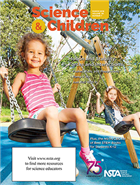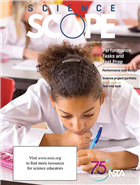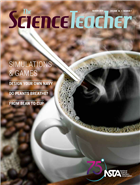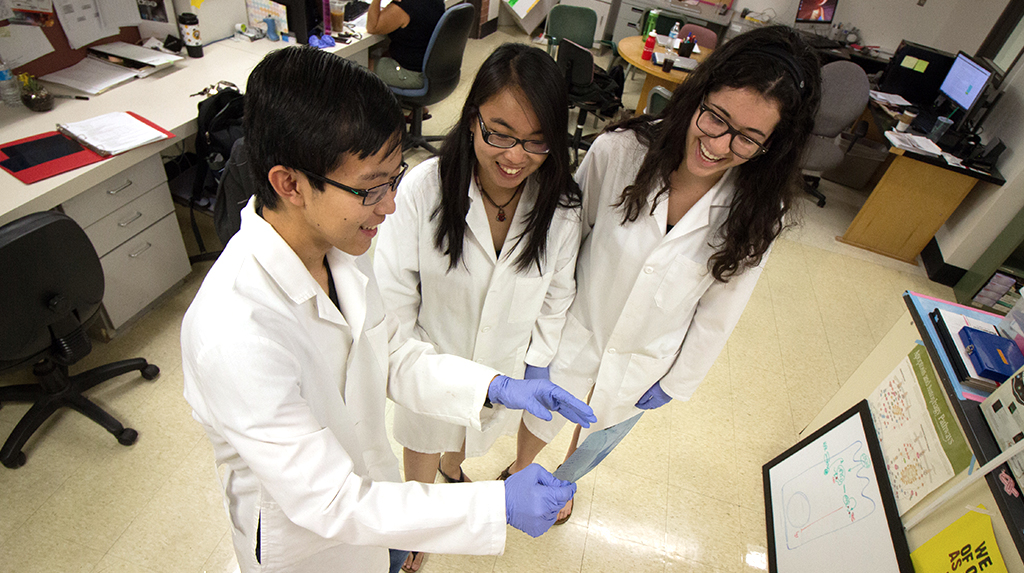We are at an exciting time in science education. The Framework for K-12 Science Education (NRC, 2012) presents a vision for how we should teach science that is grounded in empirical evidence and what we know about how students learn. The Framework focuses on learners building useable knowledge of the world by making sense of phenomena using the three dimension of scientific knowledge – disciplinary core ideas (DCIs), scientific and engineering practices (SEPs) and crosscutting concepts (CCCs). Science and Engineering for Grades 6-12: Investigation and Design at the Center (National Academies of Sciences, Engineering, and Medicine, 2018) revisits the ideas in the Framework and presents greater clarity on the vision for science teaching and learning and what we need to do in the classroom to achieve this vision. The goal of instruction is not for learners to develop understanding of science concepts through a laboratory activity. The goal is for all learners to use the three-dimensions to make sense of phenomena, solve problems, think creatively, and learn more when needed.
But this is a complex change and it will not happen overnight. Since becoming teachers, many of us have focused on using inquiry activities to help students learn content. In K – 12 schools and in college, it was drilled into us to memorize in order to succeed. But the new vision pushes us to realize that building on prior knowledge of disciplinary core ideas, applying crosscutting concepts and scientific and engineering practices helps develop deeper knowledge of how the world works. Teachers and school districts need excellent instructional resources – curriculum materials and assessments as well as long-term professional learning to enact this new vision (Krajcik, 2015). Professional learning will allow us to form communities to learn and grow together to realize this new vision. Instructional resources and professional learning need to work together to support growth so that all of our students can make sense of the world, problem solve, design solutions to problems and think creatively. Chapter 6, Instructional Resources for Supporting Investigation and Design, in Science and Engineering for Grades 6-12: Investigation and Design at the Center (NASEM, 2018) presents critical ideas on how teachers can make use of and what to look for in instructional resources to promote three-dimensional teaching and learning. In this blog, I highlight some of the key features of instructional resources discussed in Chapter 6.
Instructional resources need to provide phenomena and design challenges that engage learners in three-dimensional learning. The phenomena and design challenges need to be compelling and complex enough that they provide a reason for learners to grapple with challenging disciplinary core ideas, crosscutting concepts, and science and engineering practices to make sense of phenomena or design challenge. The phenomena used for designing and guiding instructional resources needs to engage, promote wonder and provide multiple opportunities to make sense of the world. After experiencing a phenomenon, learners should have a sense of wonderment about why the phenomenon occurred and ask questions such as “What could have caused that to happen?” “What can I do to change conditions so that it this doesn’t reoccur?” “What can I do to ensure this stays the same way?” (Krajcik and Czerniak, 2018).
Not all phenomena and design problems are the same. For instance, that water evaporates is a phenomenon that relates to various performance expectations and DCIs at the secondary level. However, it is not compelling nor is it a complex phenomenon. A student could easily google a response to why water evaporates; however, they would not necessary develop knowledge-in-use with such an effort. If you don’t need to use science and engineering practices and crosscutting concepts to make sense of a phenomenon, then it isn’t a good phenomenon or design problem to drive learning. A more compelling and complex phenomenon that could be used for similar performance expectations and DCIs is “Why do a I feel cool when I get out of a swimming pool?” This phenomenon deals with the mechanism of evaporation and also relates to key DCIs and would engage students in various SEPs and CCCs but it is a more compelling, deeper and complex phenomenon that would provide sustained engagement and more wonderment (Schneider, Krajcik, Lavonen, Salmela-Aro, 2019). In the era of three-dimensional learning we see a shift from students learning about scientific ideas to students designing a solution to a problem and making sense of compelling and complex phenomenon.
A second key feature needed in instructional resources is a focus on learners using evidence to construct explanations of phenomena. A hallmark of science is the development of evidence-based explanations of phenomena. However, the way that science has traditionally been taught in schools, learners were often given the reasons (i.e., the scientific ideas) for phenomena, but not the supporting evidence. In fact, the scientific ideas were often described without connecting to phenomena. Instead learners should have the opportunity to construct claims through the use of evidence and reasoning. The data they use can come from either first or second hand sources, but the important aspect is that students analyze and interpret data to makes sense of scientific questions and to make claims supported by the evidence. In constructing explanations, learners could develop models that show a mechanism to account for the phenomenon occurring. Instructional resources need to provide the contexts and the experiences to allow students to grapple with data to make claims, argue about those claims and support those claims with evidence and reasoning. Instructional resources, in the era of three-dimensional learning, present a shift from using data to verify a scientific principle to learners using data as evidence to construct explanations and develop arguments to support explanations.
The diversity of learners in our country grows daily. Instructional resources need to provide support for a wide variety of children who live throughout the United States including learners who come from economically disadvantaged backgrounds, racially and ethnically diverse learners, English language learners (ELL), gifted learners, and learners with cognitive and physical disabilities (Lee, Miller, Januszyk, 2015). Equitable learning resources include supports for valuing and leveraging the background knowledge of all learners. These curriculum resources connect to the knowledge children bring from their families, cultures and communities and show how these sources of knowledge connect to and enhance the learners understanding of science. To support all learners, instructional resources also need to provide a variety of rigorous ways for students to engage in learning. Instructional resources that support all students in learning will allow learners to read, write, listen, speak, represent, and experience doing science. While one could argue these methods were superficially used throughout science education, I see a big change with the switch to three-dimensional learning. Today there is a switch to representing ideas by creating models supported by evidence, and the writing is no longer simply presenting ideas but the creation of explanations supported by evidence. Reading is not just about finding out the facts of science, but seeking evidence and reasoning to support claims. Instructional resources should provide a shift away from using worksheets, instead students should be presented with opportunities to express their emerging understanding of the causes of phenomena or their solutions to design challenges in multiple ways. Teachers and teacher leaders also need to be able to modify instructional resources to support the experiences and cultural backgrounds of their students. Such modifications can help students see and navigate different ways of knowing rather than memorize ideas without clear connections to their lives (Sánchez Tapia, Krajcik, and Reiser, 2018).
A fourth, important feature of instructional resources is that they need to build coherently across time. Instructional resources are key to promoting useable knowledge by providing coherent materials that support learners in building and revisiting DCIs, CCCs, and SEPs throughout the year and by making connections to these ideas as instruction progresses to new phenomena or challenges. Coherent instructional materials should help students see how they can use science and engineering to make sense of phenomena in their everyday world. Coherence is critical in helping learners build useable knowledge of the three-dimensions that they can use in new situations. Through carefully sequenced experiences, instructional resources need to support students deepening over time the sophistication with which they understand DCIs, SEPs, and CCCs. The models that a third grader builds of what causes objects to start or stop moving should look very different than the models of an eighth grader. However, both models should act as stepping stones for building deeper knowledge. This sophistication will only occur by providing various instructional supports across time. In the era of three-dimensional learning there is a shift from students completing a prescribed lab experiment that illustrates a science example to a situation in which instructional resources provide students with a set of investigation and design opportunities that support students in incremental sense-making so that they can build knowledge of how the natural and designed world works.
Instructional materials that build across time will have learning goals that integrate the three dimensions of scientific knowledge. These three-dimensional learning goals build towards a performance expectation or a bundle of performance expectations. The performance expectations are complex and represent what students should know at the end of a grade band or grade level. In the era of three-dimensional learning we have shifted from learning goals that focus on a science fact or principle to learning goals that integrate core ideas, SEP and CCCs so that learners build usable knowledge.
Although instructional technologies serve as valuable resources to help students learn, I have never been an advocate of using technology for technology sake (Novak and Krajcik, 2004). Instructional technology in the era of three-dimensional learning can be used to support students in many scientific practices from data collection and analysis to model building to computational thinking. Such uses are appropriate and can allow for investigations and designs that normally would not be possible in the science classroom. Technology can support students in making sense of the world, but don’t use it as a tool to just present information.
Finally instructional resources should provide assessments that focus on students using the three dimensions. High quality assessment tasks need to be designed using compelling and complex phenomena or design challenges, contexts that motivate learners, designs appropriate for a variety of learners, and integration of the three dimensions. One caution in selecting and using assessment tasks is to avoid items that appear to be three dimensional, but that only require students to recall the DCI to produce a model or explanation and don’t engage students in sense-making using all the dimensions. Assessment tasks need to engage learners in the figuring out process. If they do, both learners and teachers will receive excellent feedback on how students are progressing with developing useable knowledge. With three-dimensional learning and useable knowledge as our goal, we see a shift from assessments focusing on primarily measuring science content to assessments focusing on measuring students’ knowledge-in-use, using the three dimensions to make sense of phenomena or solve design problems.
The shifts discussed in this blog and in Chapter 6, Instructional Resources for Supporting Investigation and Design, in Science and Engineering for Grades 6-12: Investigation and Design at the Center (National Academies, 2018) require us as teachers to change our practices in classrooms to more closely match what it means to do science. Many publishers, university groups, districts, and state efforts are involved in designing and building materials to align with three-dimensional learning. However, even with the best of intentions many of these materials won’t match up. In a previous blog I wrote for NSTA (Krajcik, 2014), I stressed that designing and developing three-dimensional instructional resources that other teachers can use is just really hard to do. Selecting complex and compelling phenomena so that learners can engage in using the three-dimensions to figure things out is challenging work. You will need to develop the intellectual tools to judge which instructional resources represent the vision of three-dimensional learning. As you select instructional materials, I encourage you to use the ideas in Chapter 6 and also the EQuIP rubric (Achieve, 2016) to carefully examine materials. The EQuIP rubric provides us with a set of criteria to help us judge if materials align with the vision of the Framework and three-dimensional learning. Designing materials that have DCIs, SEPs, and CCCs that are integrated together to help learners make sense of phenomena and design solutions is challenging. It is harder yet to have DCIs, SEPs, and CCCs that are integrated and work together over time to help students develop the level of understanding needed to meet the proficiency level of performance expectations.
As a science education community, we have our work cut out for us. But if we can engage learners in using the three-dimensions to make sense of compelling and complex phenomena and design challenges, we will have taken an important step forward in supporting all learners in developing knowledge-in-use, so that they can solve problems, make sense of their world, be creative, and learn more when they need to. I would love to hear from you about this blog, your ideas, questions, and feedback.
References:
Achieve. (2016). Educators evaluating the quality of instructional products (EQuIP) rubric for science, version 3.0. Available: http://www.nextgenscience.org/sites/default/files/EQuIP Rubric for Sciencev3.pdf [October 2018].
Krajcik, J. (2014). How to Select and Design Materials that Align to the Next Generation Science Standards, NSTABlog. http://nstacommunities.org/blog/2014/04/25/equip/
Krajcik, J. (2015). Three dimensional instruction: Using a new type of teaching in the science classroom. Science Scope, NSTA Press 39(3): 16–18.
Krajcik, J.S., & Czerniak, C., (2018). Teaching Science in Elementary And Middle School Classrooms: A Project-Based Learning Approach, Fifth Edition. Routledge, Taylor and Francis Group: New York & London.
National Academies of Sciences, Engineering, and Medicine. 2018. Science and Engineering for Grades 6-12: Investigation and Design at the Center. Washington, DC: The National Academies Press. doi: https://doi.org/10.17226/25216.
Novak, A., and Krajcik, J.S. (2004). Using learning technologies to support inquiry in middle school science. In L. Flick and N. Lederman (Eds.), Scientific Inquiry and Nature of Science: Implications for Teaching, Learning, and Teacher Education (pp. 75–102). The Netherlands: Kluwer Publishers.
O. Lee, E. Miller, and R. Januszyk (Eds.), (2015), Next Generation Science Standards: All Standards, All Students. Arlington, VA: National Science Teachers Association.
Sánchez Tapia, I., Krajcik, J., and Reiser, B.J. (2018). “We don’t know what is the real story anymore”: Curricular contextualization principles that support indigenous students in understanding natural selection. Journal of Research in Science Teaching. Available: https://onlinelibrary.wiley.com/doi/full/10.1002/tea.21422 [October 2018].
Schneider, B., Krajcik, J., Lavonen, J., Salmela-Aro, K. (Expected publication 2020) Learning Science: Crafting Engaging Science Environments. New Haven: Yale University Press.
Joseph Krajcik is Lappan-Phillips Professor of Science Education and Director of the CREATE for STEM Institute at Michigan State University. Previously, he taught high school chemistry and physical science in Milwaukee for 8 years, and taught at the University of Michigan for 21 years. His expertise includes curriculum and instruction; science education; and teacher education, learning, and policy. He works with science teachers to reform teaching practices to promote students’ engagement in and learning of science.




 What are some interesting ways to introduce some of the major players in scientific discoveries so that my students can have a better grasp at who these people were and that they can aspire to be just as innovative and crucial to the world of science?
What are some interesting ways to introduce some of the major players in scientific discoveries so that my students can have a better grasp at who these people were and that they can aspire to be just as innovative and crucial to the world of science? Science & Children –
Science & Children –  Science Scope – Performance Tasks and Test Prep
Science Scope – Performance Tasks and Test Prep The Science Teacher –
The Science Teacher – 



 I am sick of using cookbook labs in my chemistry class and want my students to conduct more inquiry labs. However, my principal thinks that this might be a recipe for disaster. What do other chemistry teachers do to incorporate more inquiry into their chemistry labs?
I am sick of using cookbook labs in my chemistry class and want my students to conduct more inquiry labs. However, my principal thinks that this might be a recipe for disaster. What do other chemistry teachers do to incorporate more inquiry into their chemistry labs?